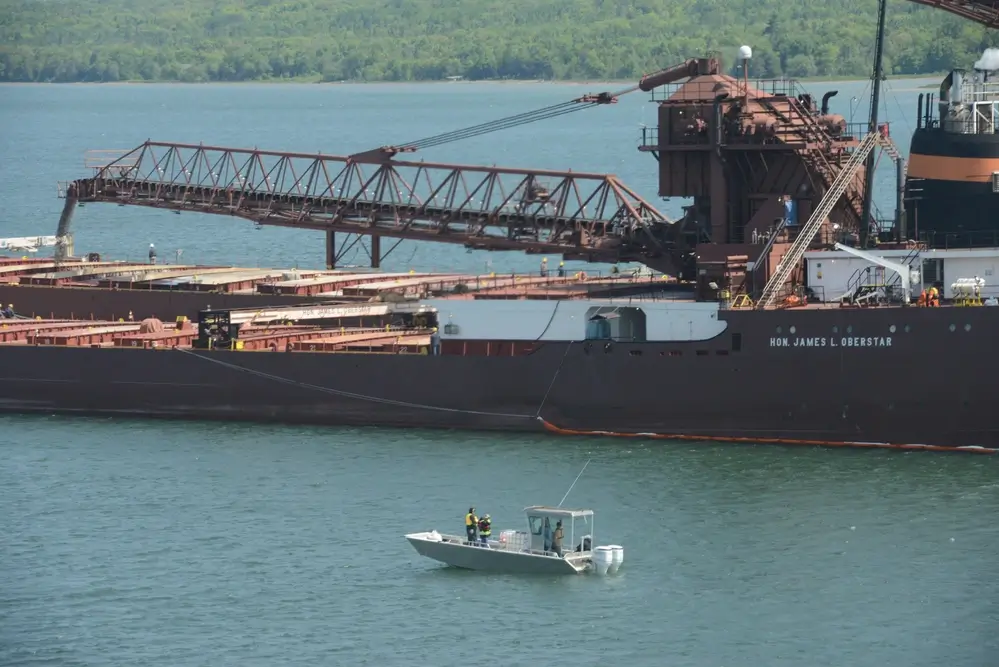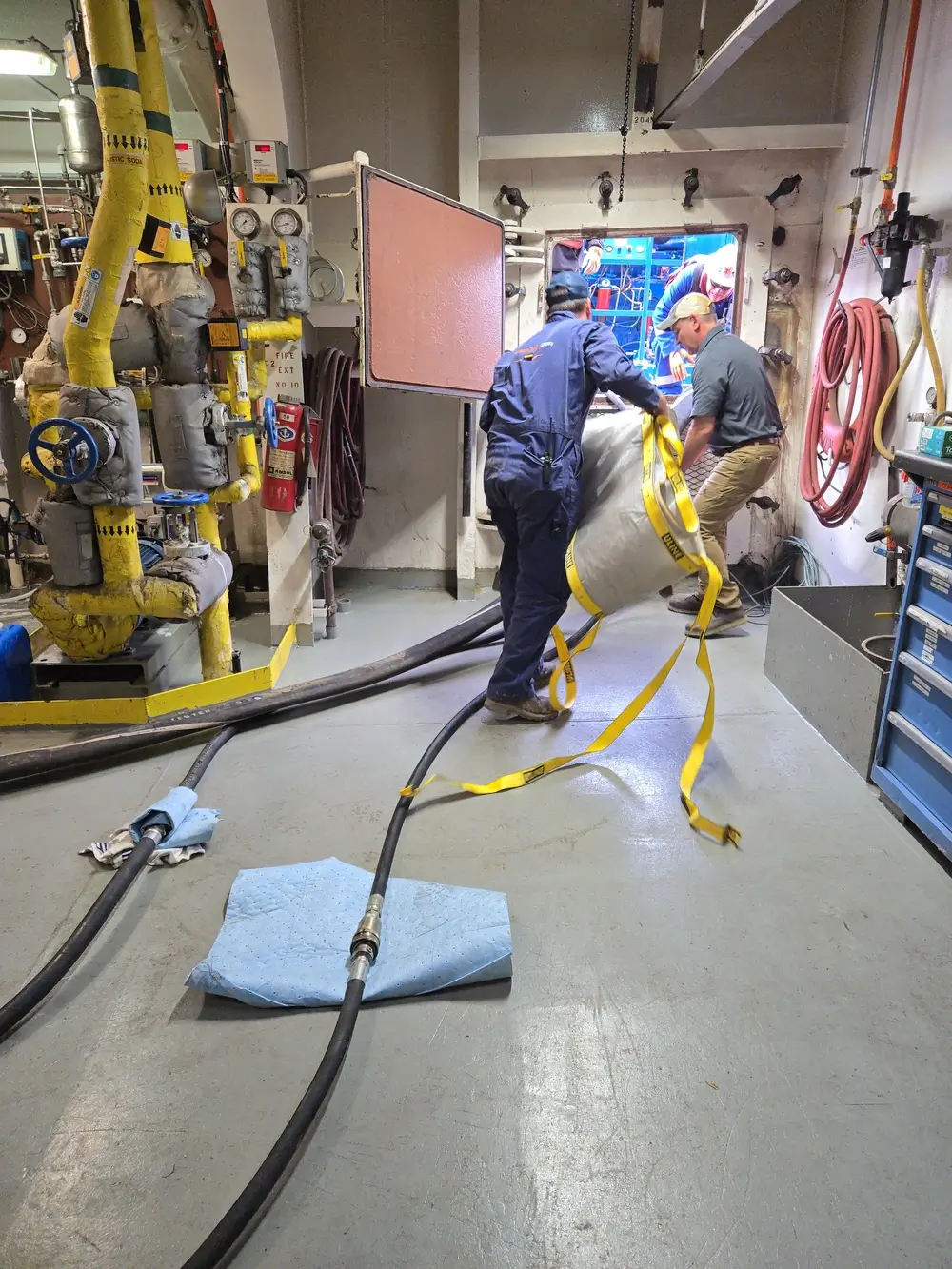Grounded Laker Transits to Shipyard for Repairs

After defueling, lightering off cargo and undergoing a thorough inspection, the laker Hon. James L. Oberstar has gotten under way for a drydock facility to conduct repairs from a grounding.
At about 1550 hours on June 8, the laker Hon. James L. Oberstar experienced unusual vibration after making the turn at Johnson's Point on the St. Mary's River. The crew notified the Coast Guard and went to anchor on nearby Hay Lake to conduct a damage assessment. Photos from the scene appear to show that she had taken on a slight starboard list.
No injuries or pollution were reported, but responders deployed a containment boom around the vessel as a precautionary measure. Under the control of a unified command, the operator and commercial salvors began to take measures to reduce the risk of pollution and to maximize the vessel's stability. The laker Kaye E. Barker anchored alongside the Oberstar on Thursday morning, and the crew of the Oberstar used their self-unloading boom to transfer their cargo - 29,000 tonnes of limestone - over to the Barker. Responders also ran hoses to a damaged bunker tank and pumped off thousands of gallons of oily-water mixture.

Oberstar's crew transfer limestone cargo over to another laker, June 12 (USCG)

Salvors work to transfer oil-water mixture out of a damaged bunker tank aboard Oberstar (USCG)
After these steps were completed, and a thorough engineering assessment of the ship was finished, the unified command authorized the Oberstar to make a transit to Fraser Shipyards in Superior, Wisconsin. The trip will take about 28 hours to complete.
“This incident is not complete until the vessel is safe and secure at Fraser Shipyard,” says U.S. Coast Guard Captain James Bendle, Federal On-Scene Coordinator for the Hay Lake Marine Casualty Unified Command, “Everyone supporting this response is highly focused on ensuring that personnel aboard and escorting the vessel are safe, that our waterways and wildlife are protected, and that any impacts to economic activity are mitigated.”
